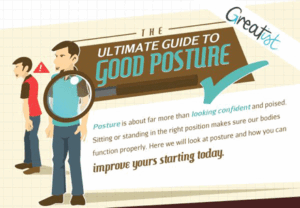How Accurate Is That Test?
Physical assessment is considered one of the most accurate ways to assess function of the locomotor tissues of the body. While we can often gain valuable information about structural problems through high-tech diagnostic procedures like X-ray or MRI, these procedures tell us very little about the function of the tissues involved in creating and limiting movement.
Some of the most detailed information practitioners gather from physical examination comes from a group of procedures called special tests. This group includes methods such as active range of motion; passive range of motion; manual resistive tests; and special regional orthopedic tests. The special regional orthopedic test is a particularly important element of the assessment process. This test is designed to give information about a particular injury or condition.
A practitioner’s success in identifying a client’s problem is often directly related to his/her ability to perform good assessment procedures such as special regional orthopedic tests. The practitioner must be able to perform the test correctly. Other factors also come into play in determining how effective that assessment procedure is, and consequently how effective the practitioner is at identifying the client’s problem.
Accuracy in special regional orthopedic tests is affected by the relationship of two related concepts – sensitivity and specificity of the test. Sensitivity is the percentage of subjects with the condition who also show a positive result on the test. It determines how “sensitive” (accurate) the test is at determining the condition when it is present. Specificity is the percentage of subjects without the condition who show a negative result on the test. It determines whether the test can show if someone doesn’t have the condition.
Take as example a sample of people in an experiment: some with carpal tunnel syndrome, and some without. If a special regional orthopedic test like the Phalen’s test is performed, and everyone tests positive for carpal tunnel syndrome, it means that everyone in this group who had carpal tunnel syndrome got a positive test. The sensitivity of the test in this instance is considered high. However, all the people who don’t have carpal tunnel syndrome also tested positive; there were no negative tests, even for people without the condition. Therefore, this test’s specificity is low.
Certain commonly utilized special orthopedic tests may not have a high degree of sensitivity or specificity, yet are frequently used as guidelines for evaluating the presence of a particular condition. A good example of this is Adson’s maneuver, used for identifying thoracic outlet syndrome. To perform Adson’s maneuver, the practitioner finds the client’s radial pulse at the wrist, then brings the client’s arm back into extension and lateral rotation. The client is instructed to look over his/her shoulder toward the affected side and take in a deep breath. If the intensity of the pulse diminishes, the client is suggested to have entrapment of the brachial plexus and subclavian artery by the anterior and middle scalene muscles — commonly referred to as thoracic outlet syndrome. The problem with this procedure is that a large number of people who do not have any symptoms test positive (diminishing radial pulse) when this test is performed. Thus, this test does not have a high degree of specificity.
The most accurate special regional orthopedic tests have high degrees of specificity and sensitivity; however, this is not always easy to demonstrate. Many studies attempt to evaluate the effectiveness of different assessment procedures, and to illustrate the strengths and weaknesses of each. The more you know about the clinical accuracy of these procedures, the more capable you are of identifying your client’s primary complaint.
Ready to #feelbetter?
You're just a click away from a wicked good massage!
-

60 Minute Massage Gift Card
$170.00 Add to cart -

90 Minute Massage Gift Card
$255.00 Add to cart -

Mini Aer Small Room Air Purifier
$149.00 Add to cart -
Sale!

Thera-Pearl Sports Pack/Hot Cold
Original price was: $14.99.$12.99Current price is: $12.99. Add to cart -

3 Somadome Sessions Gift Card
$135.00 Add to cart -

TheraBand CLX Connective Loop
$14.99 Select options -

6 Somadome Sessions Gift Card
$270.00 Add to cart -
Sale!

Biofreeze
Original price was: $14.99.$12.99Current price is: $12.99. Add to cart
Passion Mountain
I was at an event recently and was asked by somebody how I could STILL be so passionate for what I do. He said, “What I mean is that you talk about what you do with the passion of child flipping through a new pack of baseball cards. I wish I was that passionate about…
Read MoreFish You Should Scale Back On
New Englander’s love their seafood and we deepen our love affair every summer when our favorite crustaceans, ‘lobstah’ is a plentiful. But what is the best seafood for us and what are the ones that we should be staying away from regardless of how yummy they may be? Monterey Bay Aquarium has combined data from…
Read MoreSports are a Great Metaphor
It’s no secret that my life has always revolved around athletics. From my early days playing pop warner football, through my college years of lacrosse and on into the various community leagues since, being part of a team has always been where I feel most comfortable. What I enjoy most about being part of a…
Read MoreWhat is an Expert?
“An expert is someone widely recognized as a reliable source of technique or skill whose faculty for judging or deciding rightly, justly, or wisely is accorded authority and status by their peers or the public in a specific well-distinguished domain.” – Wikipedia This past month I flew to Atlanta to present a few classes in…
Read MoreThe Power of a Hug
Originally Posted 5/1/2014; following the 1 year anniversary of the Boston Marathon Bombings and our mission to rebound after these horrible attacks on our city. We helped orchestrate the ‘One Run for Boston’; a 3328.2 NON-STOP running relay from LA to Boston, raising over $500K for the victims and survivors of the events of 4/20/2013.…
Read MoreTips from the Table
Without fail, every marathon season, I am asked by my patients, what kind of advice I would offer up to them as they prepare to run the Boston marathon. I first admit that I have never (nor will ever) run a marathon, but given my unique insight of spending 1000’s of hours alone in a…
Read MoreShoulder Impingement
The glenohumeral joint is a highly complex articulation. It has the greatest range of motion of any joint in the body. However, its increased motion occurs at the expense of stability, requiring the soft tissues to play a more critical role in maintaining joint integrity. As a result of increased mechanical demands, numerous soft-tissue injuries…
Read MoreTrain, train, train. Train of fools.
In my seventeen years as a massage therapist, I am still amazed by some of the things I see in my office. Being situated 1/10th of a mile from the finish line of one of the most prestigious marathons in the world, the Boston Marathon, we see more than our fair share of runners coming…
Read MoreAchilles Tendon Disorder
Achilles Tendon Disorder Massage therapists see many clients with active lifestyles. Running, jumping, dancing, climbing, or any number of other activities can put serious stress on the Achilles tendon (AT). AT disorders also can contribute to biomechanical disorders in the foot and lower extremity. That is why it is important for the massage practitioner to…
Read More


